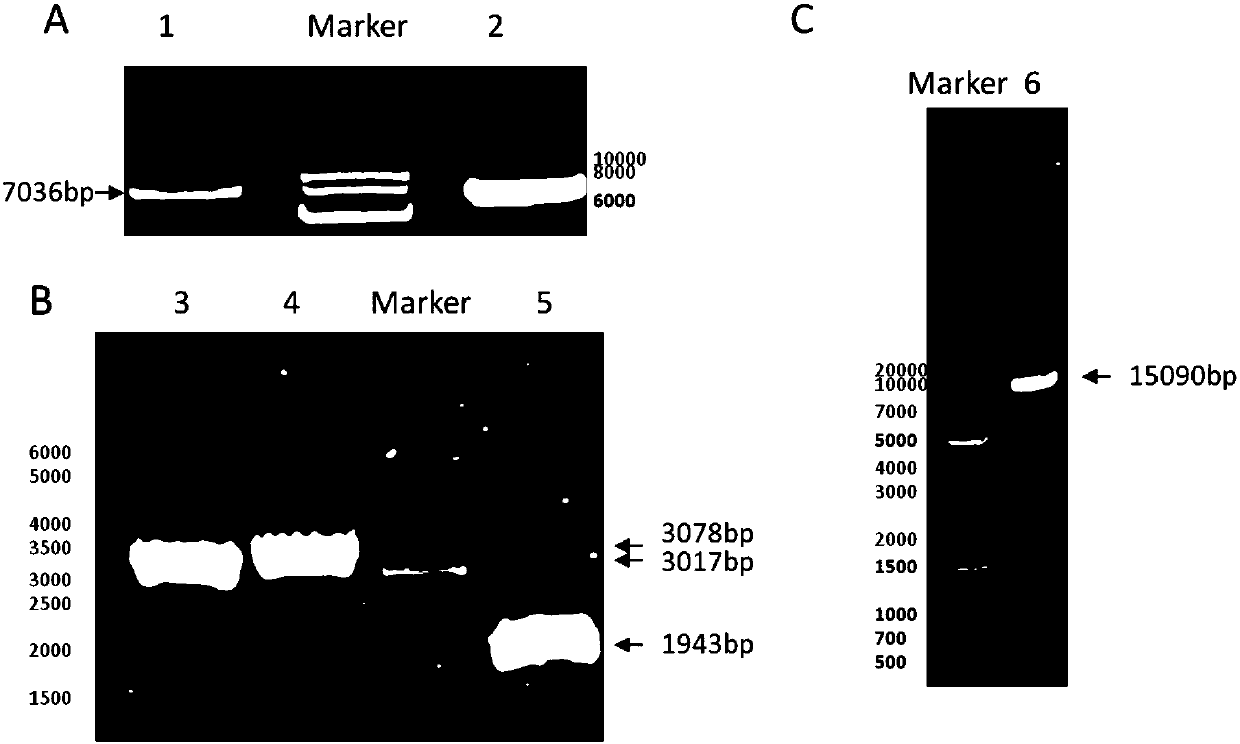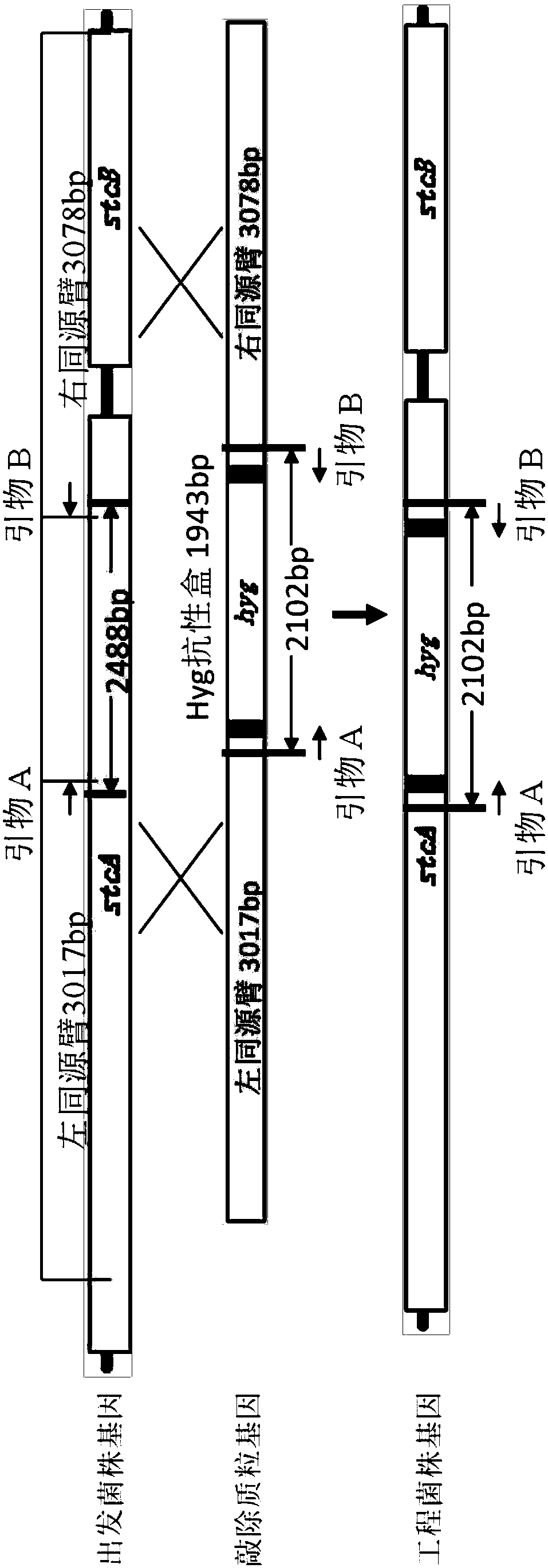Genetically engineered bacteria for producing echinocandin B as well as construction method and application thereof
A technology of genetically engineered bacteria and echinocandin, which is applied to the field of genetically engineered bacteria producing echinocandin B and its construction, can solve the problems of decreased echinocandin B yield and low echinocandin B yield, and the like, Achieve the effect of maintaining stable fermentation traits and increasing yield
- Summary
- Abstract
- Description
- Claims
- Application Information
AI Technical Summary
Problems solved by technology
Method used
Image
Examples
Embodiment 1
[0038] Example 1 Cloning of Aspergillus versicolor synthesis-related polyketide synthase gene and left and right homology arms
[0039] First, the total genome of Aspergillus delacroxii NRRL 3860 (purchased from NRRL, the American Agricultural Research Culture Collection) was used as a template to clone the Aspergillus versicolor polyketide synthase gene and its polyketide synthase gene. For nearby genes, the high-fidelity polymerase KOD-FX (TOYOBO company) was used to clone the fragments. Upstream primer S1: 5'-cagaatatcaaacaccgcccc-3' (SEQ ID NO.4), downstream primer S2: 5'-tccgtcaccgatcgtcctag-3' (SEQ ID NO.5), for PCR, PCR conditions: 98°C for 30s, 55 ℃ 30s, 68 ℃ 8min, 30 cycles. The obtained fragment was sequenced, and the homology between the sequence (see SEQ ID NO.6) and the online sequence (Genbank Accession Number: U34740.1) was 92%.
[0040] Primers were designed according to the obtained sequence of the Aspergillus delacroxii NRRL 3860 polyketide synthase gene an...
Embodiment 2
[0043] Construction of Example 2 Knockout Plasmid and Agrobacterium-mediated Fungal Transformation
[0044] A total of 4 fragments of the left and right homology arms, the hygromycin resistance gene cassette, and the linearized plasmid backbone fragment obtained in Example 1 were obtained by using Novizan’s The MultiS One Step Cloning Kit performs homologous recombination connection (see the manual for the method), and obtains the knockout plasmid pDHt-sk-stcA-hyg-stcAB, transforms E. coli DH5a, picks the transformant and cultures it in LB, and extracts the plasmid for enzyme Cutting and PCR verification, finally constructed into a knockout plasmid pDHt-sk-stcA-hyg-stcAB (15090bp, see figure 1 ). For the flow chart of the above plasmid construction, see figure 2 .
[0045] Transform the plasmid pDHt-sk-stcA-hyg-stcAB into Agrobacterium tumefaciens AGL-1 (purchased from Beijing Huayueyang Biological Co., Ltd.) by chemical transformation. cells, mix well, and ice-bath for ...
Embodiment 3
[0047] Example 3 Screening of Genetically Engineered Bacteria for Knockout of Polyketide Synthase Related to Aspergillus versicolor Synthesis
[0048] Pick the transformant and carry out secondary culture on the slant medium (potato 200g, glucose 20g, agar 18g, water 1L, natural pH) containing hygromycin (75μg / ml). The homologous recombination method of the transformant is shown in the illustration image 3 . Pick transformants, extract total DNA, and use primer A: 5'-gattccggagcgatatagc-3' (SEQ ID NO.13) and primer B: 5'-gatcatcccagccatcaatg-3' (SEQ ID NO.14) from the genome of the starting strain Amplified band 2488bp ( image 3 ), and a 2102bp fragment can be amplified from the transformant genome ( image 3 ), thus verifying that the transformed transformants obtained by amplifying the 2102bp fragment are knockout genetically engineered strains ( image 3 ).
PUM
 Login to View More
Login to View More Abstract
Description
Claims
Application Information
 Login to View More
Login to View More - R&D
- Intellectual Property
- Life Sciences
- Materials
- Tech Scout
- Unparalleled Data Quality
- Higher Quality Content
- 60% Fewer Hallucinations
Browse by: Latest US Patents, China's latest patents, Technical Efficacy Thesaurus, Application Domain, Technology Topic, Popular Technical Reports.
© 2025 PatSnap. All rights reserved.Legal|Privacy policy|Modern Slavery Act Transparency Statement|Sitemap|About US| Contact US: help@patsnap.com



